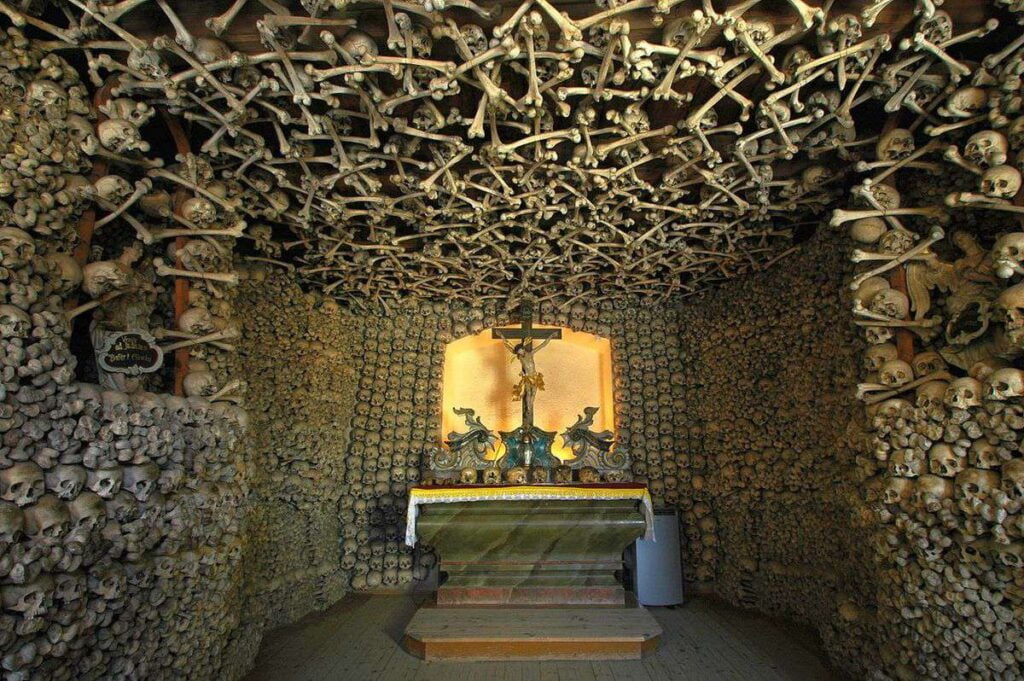A small baroque chapel hides a huge mass tomb. On the walls of the chapel you will see countless human bones and skulls, which are also located under the floor. The Skull Chapel in Kudowa-Zdrój is the only facility of its kind in Poland and only one of three in the whole of Europe.
Made with great care and attention to detail, the chapel pays homage to and aims to commemorate all those who died during wars, as well as those who were defeated by epidemics. Only authentic human skulls and bones are housed here. Although it is not known how many people the remains resting here belong to, it is estimated that the number is around 30,000 people.
The chapel contains an altar where a mass is celebrated once a year for all those whose skeletons are inside. And next to the entrance to the building, a monument has been erected with the engraved phrase “to the victims of wars in memory and to the living in remembrance”, which certainly gives much food for thought.
But how did such a unique place come to be? The idea came from the parish priest, Father Václav Tomášek, who was originally from the Czech Republic. He noticed that the ground near the church belfry was regularly torn up by dogs. It was then that numerous human remains were discovered in the soil there. Father Tomaszek had them cleaned and bleached. It was then concluded that the victims found had probably died during the Thirty Years’ War and also as a result of the cholera epidemic. The priest was keen to make the chapel a symbol of life and death, and to encourage visitors to reflect deeply. The skulls were placed one next to the other. The empty spaces were filled with bones. The remaining remains were placed in the vaults. The work was completed in 1804.
Today, the Skull Chapel in Kudowa-Zdrój looks a little different. The unique exhibits have been placed in glass cases. The remains of Father Tomaszek, as well as those of his assistant, gravedigger J. Langer, and the then mayor, are also inside. All the bones inside the chapel underwent a process of cleaning, disinfection, bleaching and impregnation, which took up to eight years.
